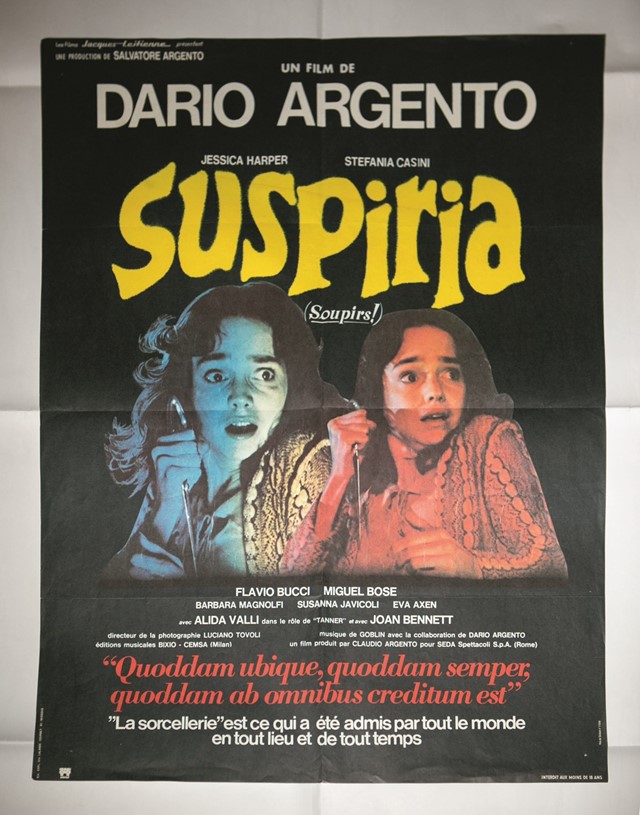Dario Argento on His Macabre Masterpiece, Suspiria
- TextBen Cobb
After 40 years of terrorising audiences around the world, Suspiria has lost none of its supernatural powers. Now, with a big screen reboot on the way and an Amazon series in the works, Ben Cobb meets its creator Dario Argento
Taken from the S/S18 issue of Another Man:
Rome, 12th July 1976. Dario Argento grabbed the phone on his desk: “Tovoli? It’s Dario Argento… I want to make a film with you. Come to my office tomorrow morning at Seda Spettacoli. Eleven o’clock. Don’t be late.” Argento hung up and swivelled his chair into the warm sunlight.
Across town, the cinematographer Luciano Tovoli gently replaced the handset. Dario Argento? Why was the reigning king of Italian horror cinema calling him, a director of photography known for his work on serious arthouse like Michelangelo Antonioni’s The Passenger? Well aware of Argento’s cultural clout, Tovoli was intrigued and, closing the door to his study, recalled a Sunday evening last year in March: With his wife and two kids out in the Villa Borghese gardens, he had been enjoying a postprandial doze on the sofa when he was suddenly disturbed by a loud commotion in the street; peering out of his penthouse apartment and down on to Largo Benedetto Marcello, he witnessed a crowd of what must have been over 100 people shouting and jostling outside the Holiday cinema, banging on the glass entrance; a splinter group darted off down Via Salaria towards the nearby Empire cinema. The next day Tovoli discovered it had been the opening weekend of Argento’s new thriller Deep Red.
Tovoli arrived at Argento’s office at 11am sharp. On the walls were giant framed posters of the director’s ‘animal trilogy’, The Bird With the Crystal Plumage, Cat O’Nine Tails and Four Flies on Grey Velvet; a consecutive series of smash hit slashers made extraordinary by opulent set-pieces, labyrinthine plotting and Argento’s fetishistic eye for detail (yes, those are his black-gloved hands in every film, clutching the murder weapon). Dwarfed beneath them, dressed in a Pink Floyd t-shirt and tapping an unknown song on a bound script, sat the 36-year-old ‘Visconti of Violence’: with dark, intense eyes, a long Prince Valiant hairdo and a nervy smile creaking across his gaunt face, Argento was every bit the prog-rock reincarnation of Edgar Allan Poe.
In a soft, thoughtful voice, Argento began telling Tovoli how he started his career as a film critic and how much he admired the cinema of Antonioni, how he cast David Hemmings in his most recent film Deep Red as a nod to Blow-Up and how powerful the colour red looked in The Passenger. Tovoli nodded politely, waiting for the pitch.
“It’s true, almost everyone is female in Suspiria, all the heroes and villains are women, and the few men are either blind, mute or useless” – Dario Argento
Argento said how he needed to escape the giallo genre of whodunnit murder-mysteries that had made him famous, how he had pushed the format as far as it could go with Deep Red, and how everyone was now making copycat films with silly titles like The Iguana With the Tongue of Fire. He was ready to do something new and radical, he said, something supernatural. He had toyed with adapting one of HP Lovecraft’s stories but couldn’t find a way into the author’s dense mythology, and then he started rereading his old copy of Suspiria de Profundis, a collection of laudanum-laced essays by the Victorian author Thomas De Quincey, which he’d found in a fusty Charing Cross bookshop years ago on a trip to London, and how he became fixated on a section about The Three Mothers, a trio of ancient, malevolent witches, and in particular Mater Suspiriorum, the Mother of Sighs; and how Daria Nicolodi, his lover and the co-star in Deep Red, had told him about her grandmother who, as a child, took piano lessons at an old school in Basle on the German-Swiss border where black magic was on the after-hours curriculum.
He described a road trip around Europe, researching old folklore, meeting witches in Black Forest villages, taking Polaroids of Art Nouveau architecture in Brussels and discovering a mysterious red building in Freiburg called The Whale House. All these places and ideas started swirling in his head, explained Argento – his hands motioning excitedly – and finally settled into a story about a prestigious Bavarian ballet school staffed by a coven of she-devils and ruled by the Black Queen, a centuries-old sorceress called Helena Markos.
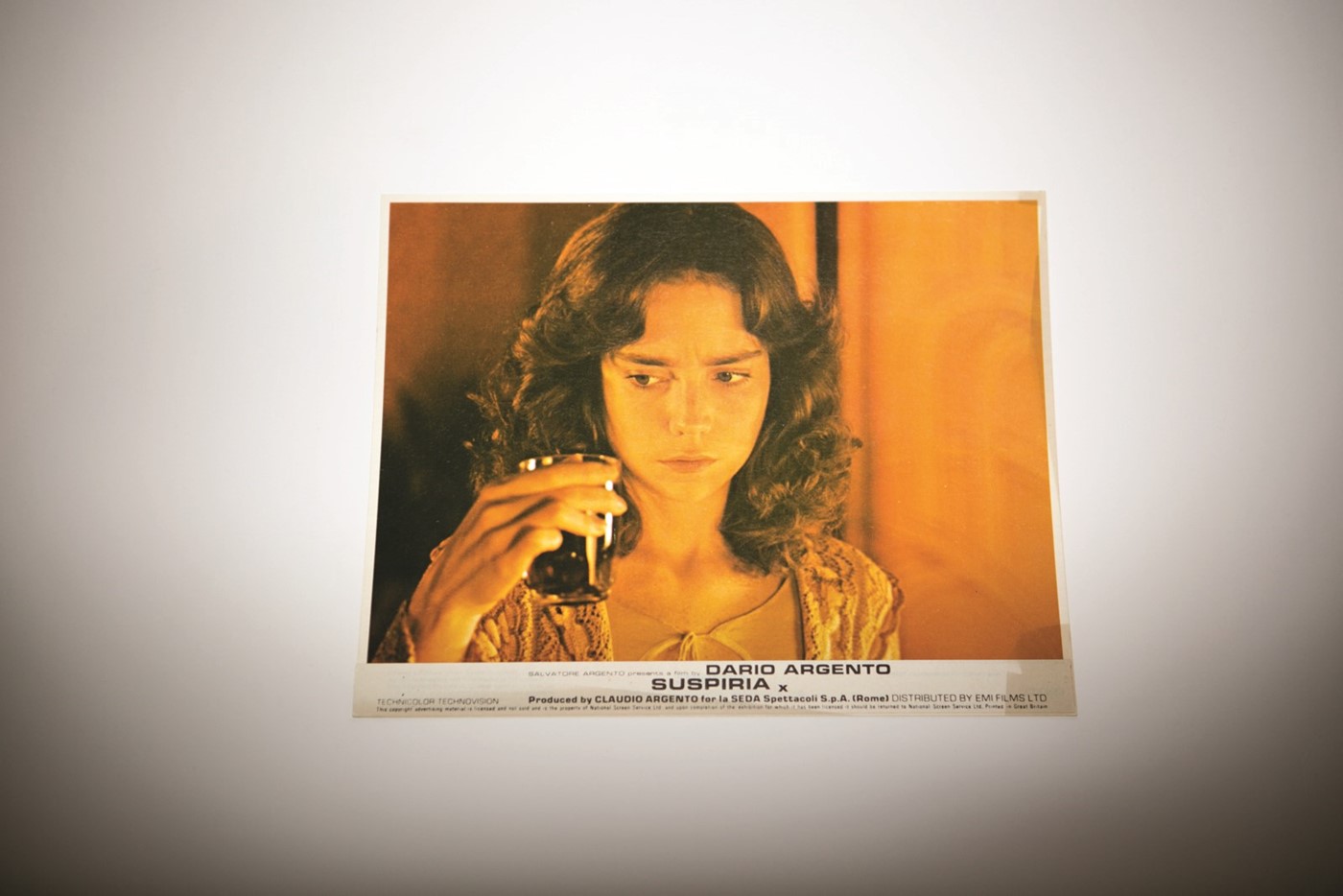
Tovoli leaned in as the animated auteur described how “S-u-s-p-i-r-i-a!” is not going to be like any other horror film; it starts how most horror films end – out of control, bloodsoaked, terrifying – and just keeps going, building and building, like a never-ending operatic crescendo, dragging the audience deeper into a maddening nightmare. The structure came to Argento while he was tripping on some good acid, a fevered dream logic piecing everything together. He told Tovoli how it needed to look like a psychedelic fairy tale, like Disney’s Snow White and the Seven Dwarfs but more, more colour… Oh, and shooting starts in two weeks.
It’s a cold November day in London as 77-year-old Dario Argento shuffles into the Barbican centre. Wrapped inside a navy puffer coat and carrying a plastic Waterstones bag, he orders a black Americano coffee with sugar, and passes through the café area unnoticed. In just a few hours, legions of diehard fans will spill into this space, clasping tickets for tonight’s screening of the restored 40th anniversary print of Suspiria, heads bobbing for a glimpse of the ‘Italian Hitchcock’. But for now, safely installed in a quiet screening room, Argento takes a gulp of coffee. “Ah, it’s too hot!” he smiles, resting the cup down in front of him. He is in cheerful spirits, excited about the evening ahead, but he looks tired and slightly dishevelled; thinning hair a windblown mess, ruched discs under weary eyes.
“The financiers and distributors got scared and said audiences don’t want to see children murdered on screen” – Dario Argento
Asia, the actress, filmmaker and Argento’s daughter with ex-partner Daria Nicolodi, has been all over the media for the last few weeks, arm-in-arm with fellow activist Rose McGowan crusading against Harvey Weinstein, sharing distressing stories of rape and assault in Hollywood. It’s been a trying time for the Argento family, with Asia even forced to defend herself against a press backlash in her homeland. Throughout it all, her father has stood by her side, proud and defiant. He doesn’t want to comment today, he’s here to talk about his Grand Guignol masterwork, but in this #MeToo climate, Suspiria – with its all-female cast (still a rarity in horror) – seems newly pertinent. Does Argento consider it a feminist film?
“It’s true, almost everyone is female in Suspiria, all the heroes and villains are women, and the few men are either blind, mute or useless,” he laughs. “But I don’t know if it is feminist, people tell me it is… The truth is I like working with women, I have always been fascinated by them. When I was very young I went to a school close to my mother’s studio; she was a photographer, famous for her portraits of actresses in the 1940s and 50s. After school, I would run there and sit in the front room where the actresses would do their make-up and get changed into glamorous dresses, and I would see these marvellous women transform. I would watch how my mother lit their faces and bodies, and when I was shooting Suspiria I remembered this.”
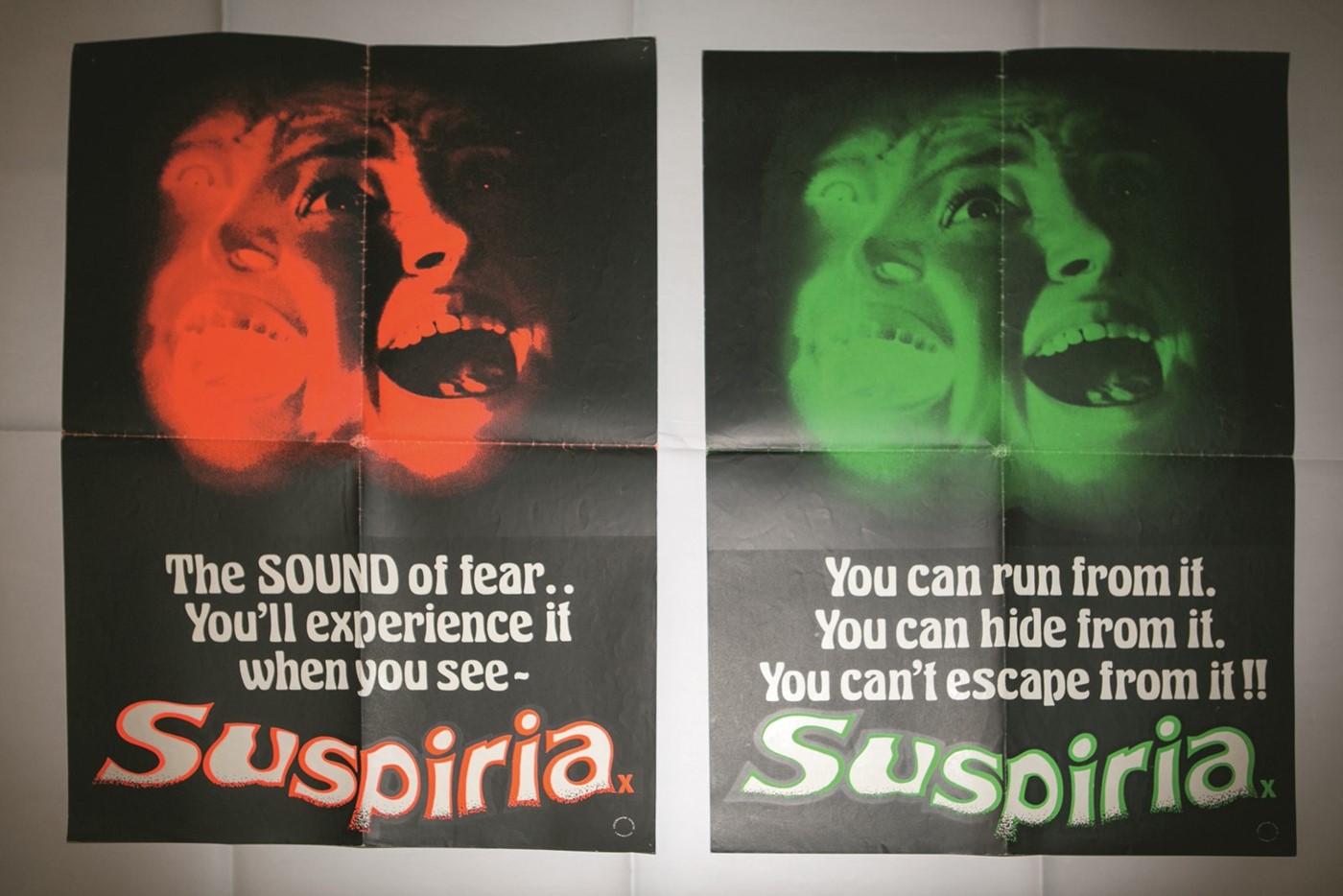
Suspiria was not always so women-centric. The original script called for ten-to-12-year-old girls to play the ballet students at the Tanzakademie. “The financiers and distributors got scared and said audiences don’t want to see children murdered on screen,” says Argento matter-of-factly. With only one month before cameras were due to roll, he had to accept the moneymen’s decision. “But I kept many elements in the film that were conceived for a cast of children: the dialogue didn’t really change, only a few parts were updated; and small elements remained to give a child’s perspective, like the door handles in the school are positioned high up. These things helped keep an atmosphere of innocence and purity.”
With the grande dames already in place – Italian icon Alida Valli as the academy’s stern instructor Miss Tanner and Fritz Lang’s former femme fatale Joan Bennett in her last role as vice-directress Madame Blanc – Argento didn’t waste any time finding his leading lady. He had seen American actress Jessica Harper in Brian De Palma’s glam-rock horror musical Phantom of the Paradise and immediately signed up the 28-year-old to play ingénue Suzy Banyon, a New York ballet student who arrives at the Tanzakademie on the same stormy night that two fellow students are brutally murdered (cue electrical cable lynching and mutilating shards of stained glass). “Jessica looked like a Manga character,” says Argento, taking a careful sip of coffee. “Big eyes and small features, she was so innocent looking, perfect for the role.” It also helped that on her resumé, alongside Woody Allen’s Love and Death, Harper had dance training.
“People came running out, screaming, telling people in the queue ‘Don’t go in! Don’t go in! It’s all witches!’ It just made everyone in line want to get in even more…” – Dario Argento
Her little-girl-lost portrayal of Suzy, wandering in a druggy state of bewilderment through the impossible inner-geography of the Tanzakademie – a sumptuous netherworld decorated in MC Escher wallpaper, ornate murals and Art Nouveau flourishes, bathed in hallucinogenic red, blue and green light – is Snow White brilliantly reborn in acidland.
“We wanted to recreate the colours of old Technicolor and Disney films,” explains Argento. “The vivid, strong colours in those films stayed in my memory from childhood. Amazingly, Tovoli discovered some old Kodak stock in a lab in America and we used that. But there was such a limited amount, we only had enough to shoot one or two takes so we did a lot of rehearsals before each shot. That’s why Suspiria took so long to film: 16 weeks.”
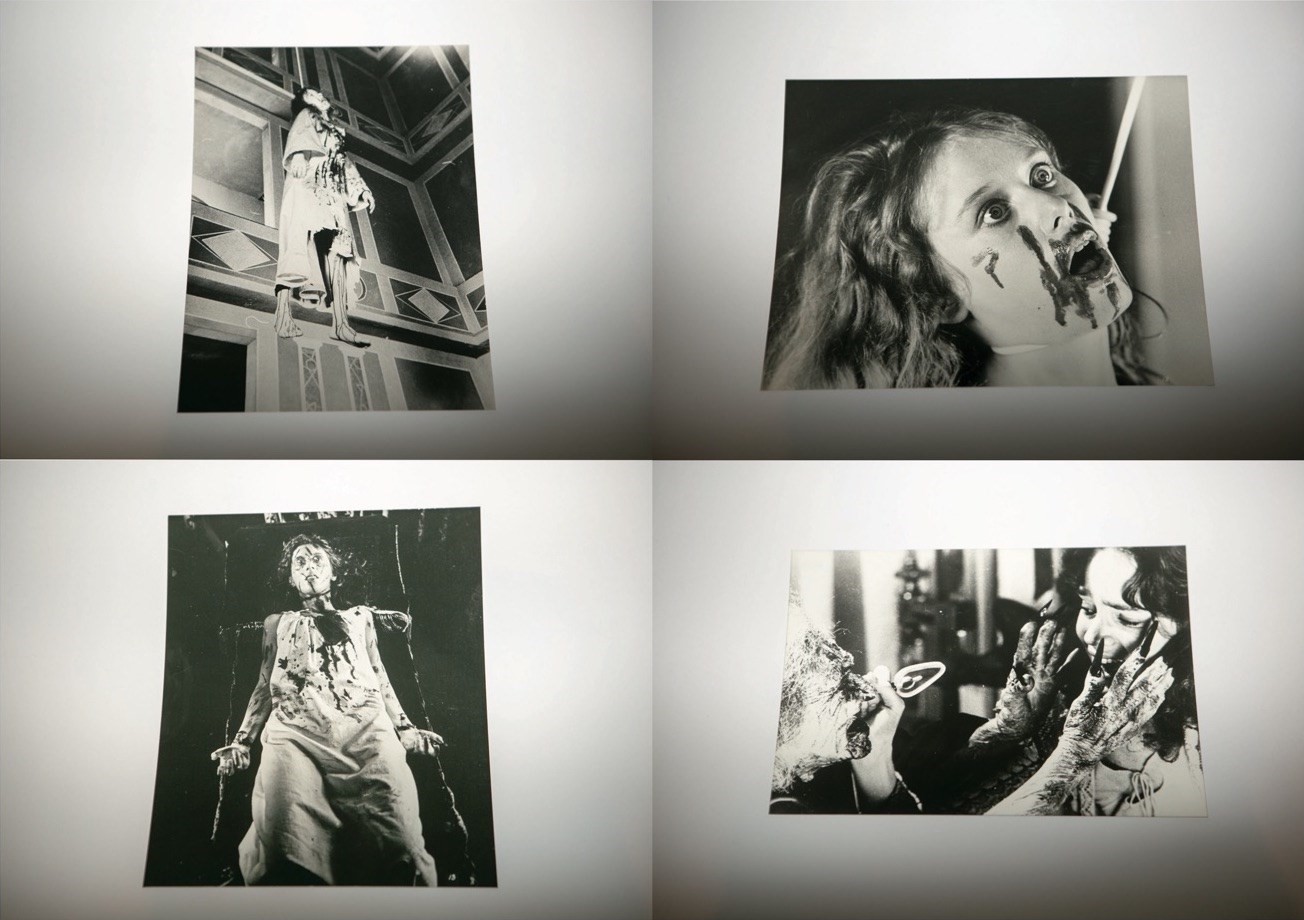
Delirious visuals are only half of Suspiria’s spell. The soundtrack, crafted by Goblin – an Italian progressive rock outfit headed by keyboardist Claudio Simonetti – is pure sonic experimentation. Goblin had worked with the director before, scoring Deep Red, but this time was different: they would turn up on set with early demos, Argento blasting the recordings through speakers while he shot scenes (“It was really loud,” he laughs, “it created a strong emotion while filming!”); after a four-day break in Athens, Argento presented the band with a bouzouki, which became a central motif (“Helena Markos, the queen of the witches, is from Greece so I wanted some Greek sound in there”).
This freeform, collaborative process produced a melodic cacophony of eerie lullabies, jangling chords, malevolent lala-la’s, swooshing synths and whispers of “Witch!” – or, as a 1977 Evening Standard review described it, “a fiendish stereo electronic-rock score which sounds as if 500 cats are having their tails tramped on in unison.” Either way, fused with Suspiria’s imagery, the result was devastating.
“The success of a film is a strange accident you can’t control” – Dario Argento
The truth is Argento always knew this film was going to be special. He knew the moment Tovoli first projected a reel of test footage and he scrambled over the seats to get to the screen, desperate to touch the flickering colours. He knew every morning as he walked on set at the De Paolis studios, and every late night editing at his Moviela. And he definitely knew on 4th February 1977 when, sat in his car outside a cinema on Suspiria’s opening night, he watched the theatre doors fly open: “People came running out, screaming, telling people in the queue ‘Don’t go in! Don’t go in! It’s all witches!’ It just made everyone in line want to get in even more… it was amazing.” Suspiria went on to do record business across Europe, at the American box office and proved so popular in Japan they re-released Deep Red as Suspiria 2; in the process, its creator became an international star.
“The success of a film is a strange accident you can’t control,” says Argento. “So I never think about the success of my films, I think only about the result, and I was satisfied with Suspiria; satisfied with the music, the colour, the acting… I wouldn’t change anything about it; it’s a perfect product of its time.”

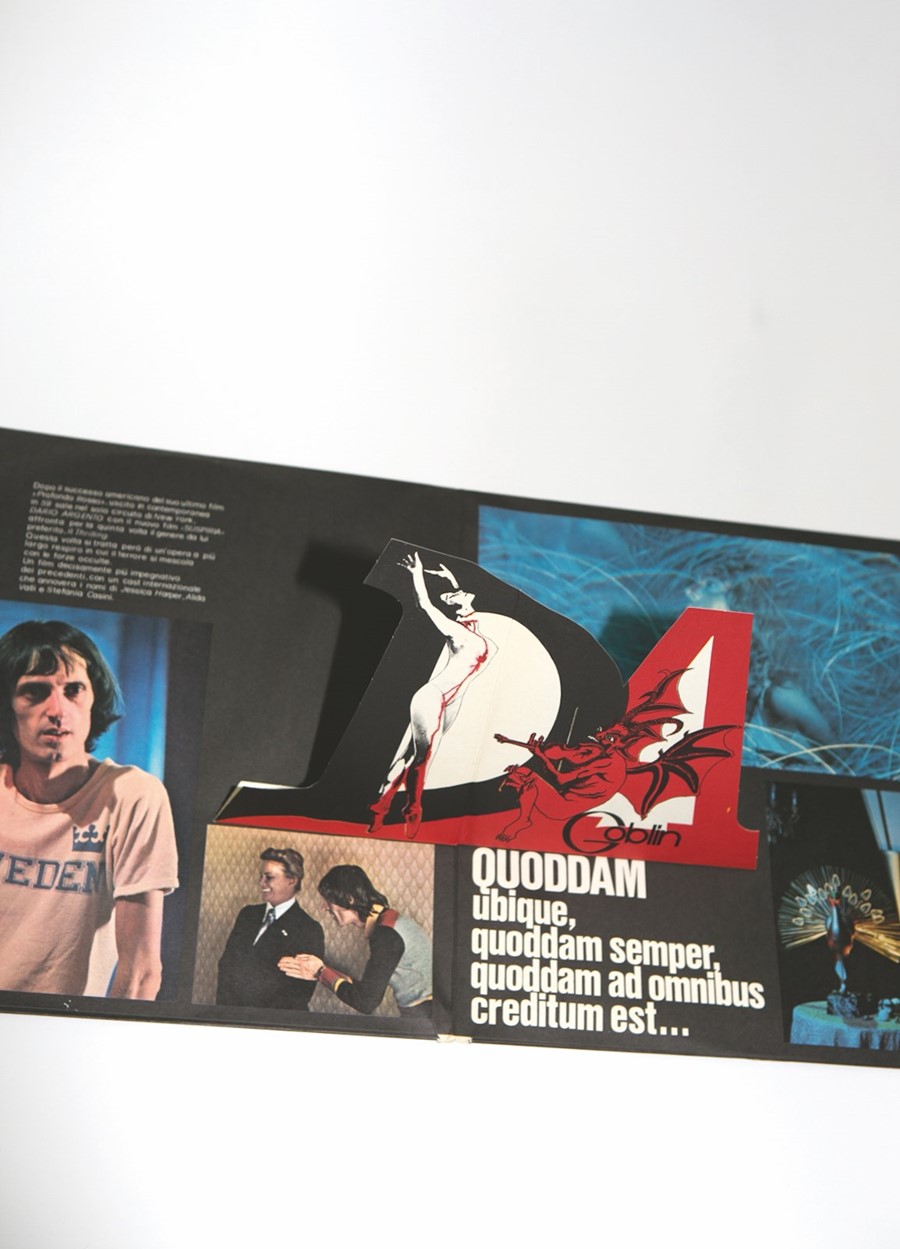
Four decades on, Suspiria is still Argento’s greatest achievement. He has made other dazzling, bravura films since, like Phenomena and Opera; completed the ‘Three Mothers Trilogy’ with Inferno, a baroque tour-de-force, followed by the uninspired Mother of Tears in 2007; and shot two other films with Tovoli, the slickly styled Tenebrae and, most recently, Dracula 3D, a woefully misguided effort starring Rutger Hauer and a giant praying mantis. Each wonderfully idiosyncratic but none with the seismic shockwave of Suspiria.
Meanwhile, Suspiria’s reputation has only grown: its influence pulsing in the demonic pirouetting of Black Swan and the colour-drenched world of Nicolas Winding Refn’s The Neon Demon; its place on every Top Ten Horror list unchallenged. This year sees the release of Luca Call Me By Your Name Guadagnino’s remake starring Dakota Johnson, Chloë Grace Moretz, Mia Goth and Tilda Swinton; and Argento gearing up to produce a 12-part series for Amazon inspired by De Quincey’s Suspiria de Profundis: “It’s about opium and supernatural mysteries set in old London, before the great fire destroyed the city.”
So, what is the enduring magic of Suspiria? “It’s a mystery to me,” he says, gathering his empty coffee cup and shopping bag. “Anyway, I don’t believe in magic. It’s a marvellous idea that spells can change your life and magic is real, however it isn’t true... But I think maybe Suspiria has a soul, an important soul.”
All Suspiria artwork courtesy of The Alan Jones Collection. Alan Jones is the author of Dario Argento: The Man, the Myths & the Magic (FAB Press). Special thanks to cultfilms.co.uk
